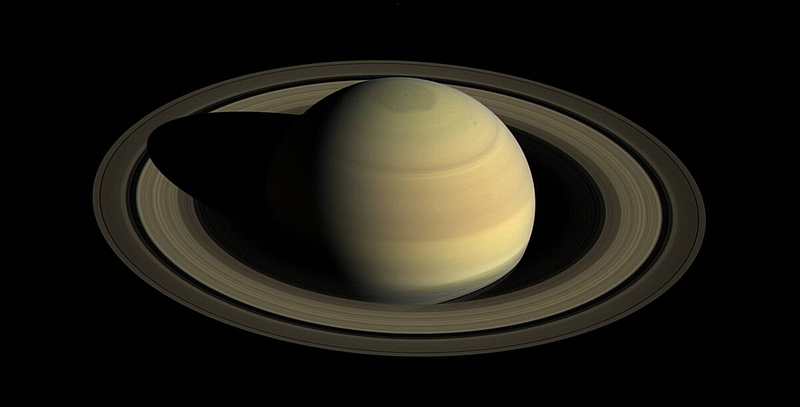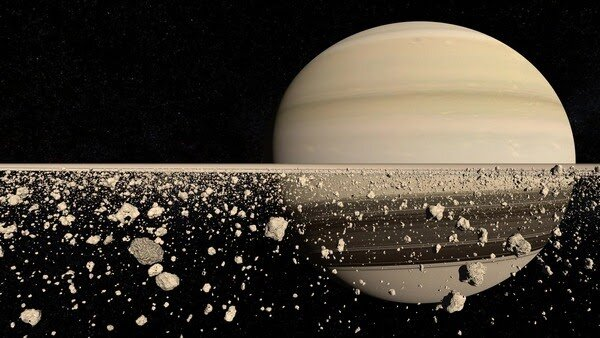The Mysteries Behind Saturn's Rings: Origins and Discoveries
Written on
Chapter 1: Introduction to Saturn's Rings
Have you ever wondered about the origins of Saturn's stunning rings? The first observations of these rings were made by Galileo Galilei in 1610. However, his telescope lacked the clarity needed to fully discern them, leading him to misinterpret their appearance as peculiar "ears" on the planet. Today, advanced telescopes and data from various spacecraft have revealed that Saturn is adorned with thousands of rings composed of icy fragments intermingled with various minerals, ranging from tiny grains to massive chunks. But what exactly caused the formation of these enigmatic rings?

Structure and Classification of Saturn's Rings
In 1660, Jean Chapelain proposed that Saturn's rings were not solid structures but rather an array of small particles orbiting the planet. Despite his insight, it took nearly two centuries for this idea to gain acceptance. The particles in the rings travel at an impressive speed of 20 km/s, yet their concentric orbits lead to gentle collisions at a minimal speed of approximately 0.1 cm/s, resulting in impacts so soft that they do not bounce off one another.
The classification of Saturn's rings is done using Latin letters based on the order of their discovery. Their thickness ranges from a few meters to 1 km, while their breadth can reach up to 300,000 km, making them the flattest known objects in the universe. Notably, there exists a ring named the Phoebe ring, which is 10 million km in width and extends to an outer radius of 16.3 million km, making it invisible to the naked eye.

An intriguing aspect of Saturn's rings is the Cassini Division, which can be spotted even with amateur telescopes. Discovered by Giovanni Cassini in 1675, this division was initially thought to be an empty gap. However, missions from Voyager and Cassini revealed that it is, in fact, a ring composed of varying materials and densities. Numerous divisions have been identified, including Keeler, Encke, Laplace, Bessel, and Bernard.
Chapter 2: Theories on the Origin of Saturn's Rings
So, what are the prevailing theories regarding the origin of Saturn's rings? Several hypotheses exist, each with its own merits.
One prominent theory suggests that Saturn originally had several large moons. Due to gravitational interactions, these moons spiraled inward and, upon reaching the Roche limit, were shattered by Saturn's tidal forces. While heavier debris fell onto the planet, lighter particles like ice remained in orbit, ultimately forming the rings we see today. Over time, collisions among these fragments have reduced their size. Some of Saturn's larger moons, such as Titan, avoided this fate due to their distance from the planet.

However, not all scientists agree with this theory, as some research indicates that the rings might only be a few hundred million years old. An alternative hypothesis posits that the rings formed from the remnants of a large moon that was destroyed by an asteroid or comet impact more recently.
Another widely discussed theory is that Saturn's rings are the leftover material from a circumplanetary disk that existed after the planet's formation. The strong gravitational pull of Saturn may have prevented this material from coalescing into larger moons. Yet, this theory raises questions: why do we see such prominent rings around Saturn compared to other gas giants? While rings have been identified around Uranus, Neptune, and even Jupiter, Saturn's rings stand out for their size and complexity.
Due to our limited understanding of the dynamics of Saturn's rings, it remains challenging to determine their precise history and timing of formation. Some computer simulations propose that the rings may have formed concurrently with Saturn, while others suggest they are relatively young. As such, the question of their origin remains open-ended.
The first video, "How Saturn Got Its Rings | The Planets | Earth Science," provides an engaging overview of the formation of Saturn's rings and the science behind their structure.
The second video, "Exploring the Origins of Saturn's Rings and Moons," delves deeper into the theories surrounding the creation of these magnificent rings, offering insights from recent studies.
If you enjoy learning about space and want to see more articles like this, please subscribe to our channel and leave your questions for future discussions. You can also support our work by becoming a Medium member for just $5 a month, helping us produce even better content!